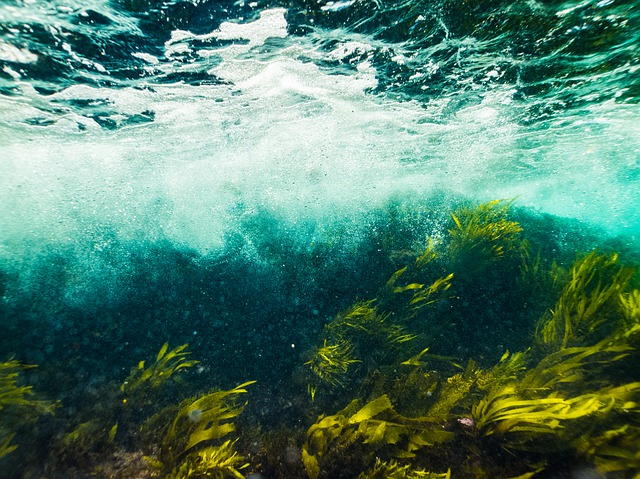Globally, more than eight percent of the population, which is nearly 700 million people, go to bed with an empty stomach every night. Despite several international efforts, the food crisis is constant and in the future, it is expected to get worse. However, experts believe that if just two percent of the world's oceans were sustainably farmed, there would be enough food to feed the world.
Vincent Doumeizel, a senior advisor on ocean-based solutions at the UN Global Compact, and an evangelist for seaweed explained that by farming just two percent of the ocean, "we could provide enough protein to feed a world population of 12 billion people. Seaweed is extremely protein-rich, low in fat, low in carbohydrates, and rich in vitamins, zinc, and iron."
Those who eat sushi know that certain forms of the seaweed can be consumed by humans and it has been popular in Asia, specifically in Japan, for many years. However, Doumeizel believes that it has the potential to become a mainstream food.
Most of the Japanese people eat seaweed three times a day, and it is used in many dishes in Korea. It is also eaten by many people in China. He said that this particular eating habit may be "a major factor in cutting the levels of non-communicable diseases in these countries," he added.

Hunger Free Wold
There are also some environmental benefits of seaweed. First, it doesn't need land, freshwater, or pesticides, just sun, and saltwater. Secondly, if livestock were fed on seaweed-based foodstuffs, rather than soy, methane emissions could be reduced by 90 percent—which would be helpful in terms of global warming—and "improve digestion whilst boosting the animals' immune systems, which reduces the need for antibiotics. This is already happening in some countries, such as Scotland and Iceland," said Doumeizel.
But according to the expert, there is a lack of space to grow an underwater forest of seaweed near the shorelines, and it can be very difficult to get a license to grow them off-shore. "We need to learn from oil companies, which have a lot of experience in dealing with strong ocean currents and waves," said Doumeizel.
An organization called Kelp Blue is planning to grow huge underwater forests of seaweed off the coast of Namibia, covering around 70,000 hectares. These underwater forests can safely lock away vast amounts of Co2 in the ocean forever which will help the world to fight the climate change crises.
Another benefit of the forests is a projected growth in fish stocks in the surrounding waters of up to 20 percent, and it is expected that around 200 species would find their home within the kelp. The forest would help to solve the world's food crisis while contributing to remove vast amounts of harmful greenhouse gases from the atmosphere, and will also create hundreds of jobs.

However, there are some technical challenges, while the main obstacles that still need to be surpassed are the lack of global safety standards for the production of seaweed and resistance to collaboration.
To overcome such issues, the UN Global Compact has published a seaweed manifesto, which not only calls for internationally agreed standards, but also new investment efforts, and collaboration between governments, science, and industry, to help the seaweed production. If these efforts become successful the seaweed industry could find itself playing a much bigger role in combating the climate change crisis, balancing and strengthening the ocean ecosystem, as well as ending the fight against hunger.









